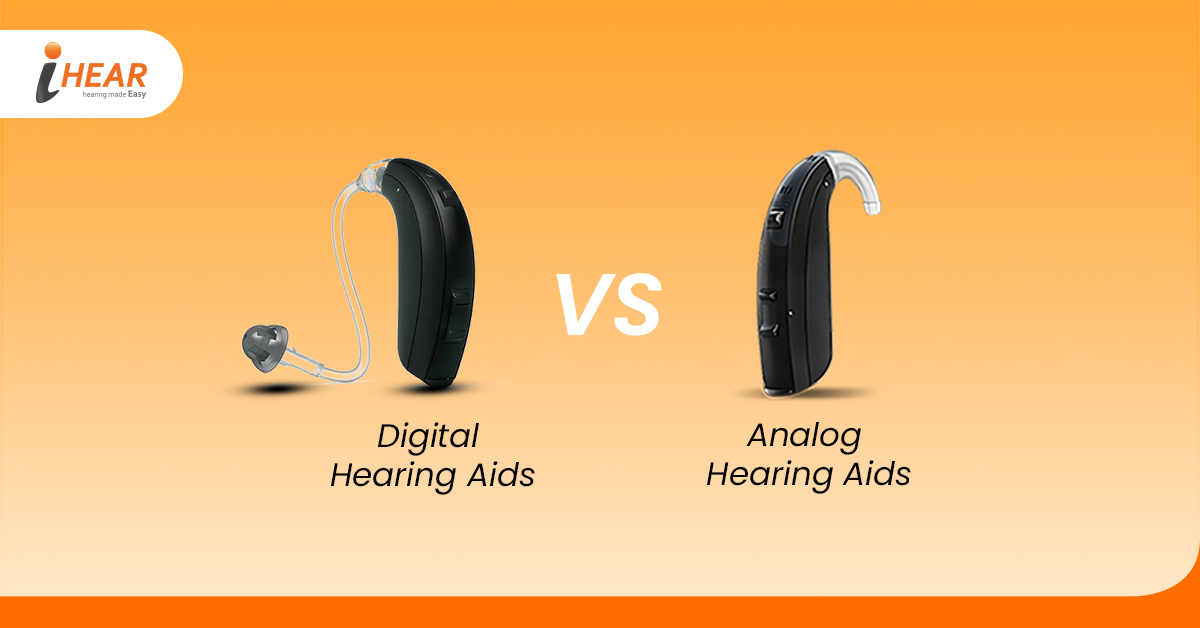Difference Between Digital and Analog Hearing Aids
Digital and analog hearing aids are two different types of hearing devices that process sound in distinct ways. Here are the key differences between digital and analog hearing aids:
1. Sound Processing:
Digital Hearing Aids: Digital hearing aids convert incoming sound waves into digital signals. These devices analyze and process the digital signals using sophisticated algorithms. This allows for precise and customizable sound adjustments, including noise reduction, directional microphones, and feedback cancellation.
Analog Hearing Aids: Analog hearing aids amplify sound in a more straightforward manner. They convert sound waves into electrical signals and amplify them without significant signal processing. Analog hearing aids provide basic amplification and do not offer advanced features like noise reduction or customized programming.
2. Sound Quality:
Digital Hearing Aids: Digital hearing aids typically offer superior sound quality because they can process and manipulate sound in real-time. This advanced processing allows for a more natural and clearer listening experience, even in noisy environments.
Analog Hearing Aids: Analog hearing aids provide a basic level of sound amplification but may not deliver the same level of clarity and naturalness as digital hearing aids, especially in challenging listening situations.
3. Customization:
Digital Hearing Aids: Digital hearing aids are highly customizable to the individual’s hearing needs. Audiologists can adjust and fine-tune various parameters, such as volume, frequency response, and noise reduction settings, to match the user’s specific hearing loss and preferences.
Analog Hearing Aids: Analog hearing aids offer limited customization. Adjustments are typically limited to overall volume and tone controls, and they may not provide the same level of precision as digital devices.
4. Noise Reduction and Feedback Control:
Digital Hearing Aids: Digital hearing aids often include advanced features like noise reduction and feedback cancellation, which can improve speech clarity in noisy environments and reduce whistling or feedback sounds.
Analog Hearing Aids: Analog hearing aids do not have advanced noise reduction or feedback control features, making them less effective in challenging listening situations.
5. Battery Life:
Digital Hearing Aids: Digital hearing aids may have varying battery life depending on the model and features, with some offering rechargeable options for convenience.
Analog Hearing Aids: Analog hearing aids typically have longer battery life compared to digital hearing aids, as they consume less power due to their simpler processing.
6. Cost:
Digital Hearing Aids: Digital hearing aids are generally more expensive than analog hearing aids due to their advanced technology and features.
Analog Hearing Aids: Analog hearing aids are often more affordable but may not provide the same level of performance and flexibility as digital models.
7. Compatibility with Accessories:
Digital Hearing Aids: Digital hearing aids can often connect to wireless accessories, such as smartphone apps or remote controls, for added convenience and functionality.
Analog Hearing Aids: Analog hearing aids typically do not have wireless connectivity options.
In summary, digital hearing aids offer more advanced and customizable features, better sound quality, and improved performance in challenging listening environments compared to analog hearing aids. However, analog hearing aids may be more budget-friendly and have longer battery life. The choice between the two depends on individual hearing needs, preferences, and budget constraints, and it’s advisable to consult with an audiologist to determine the most suitable hearing aid type for your specific situation.

